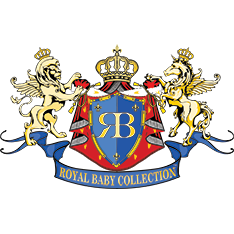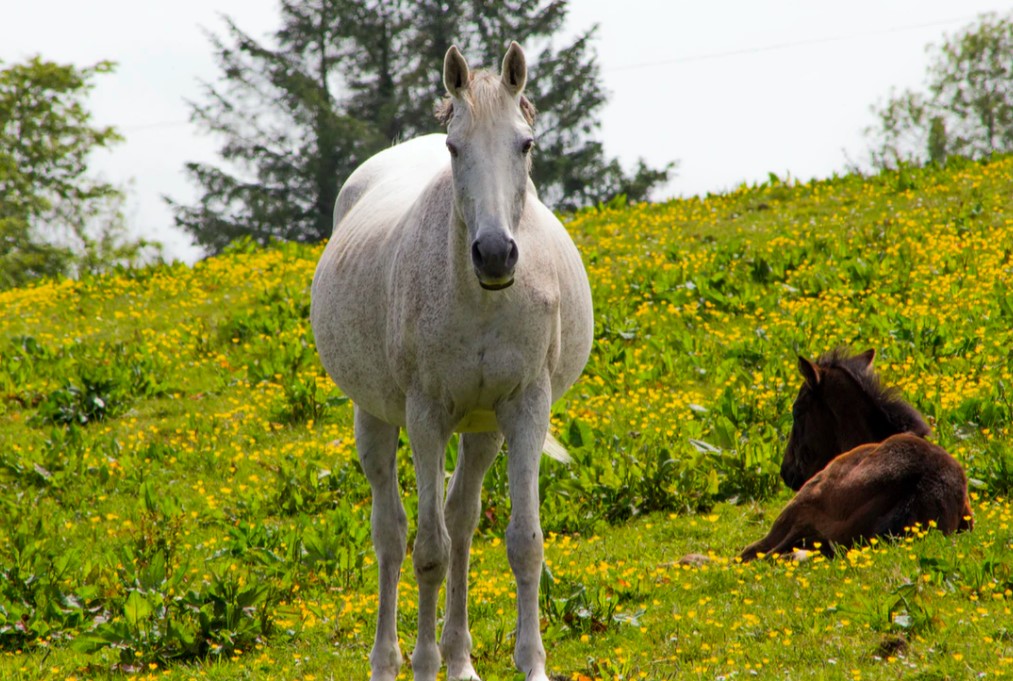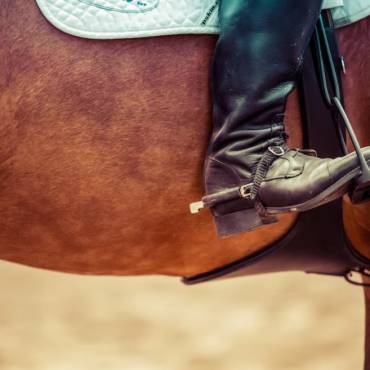It’s a question that many horse owners have pondered – just how do horses give birth? It can be hard to imagine how a full-size newborn foal was born, especially when you see those long legs! Let’s find out everything you need to know about how do horses give birth.
How Do Horses Give Birth?
The process of how do horses give birth is split into three stages. If your mare is due to foal soon, it is vital to know what to expect during each stage of the foaling process. This helps you to quickly spot if anything has gone wrong during this difficult time.
· Stage 1: Early Labor
During the first stage of labor in horses, the mare and foal are both preparing for the birth of the foal. This stage normally lasts around one to two hours, and the initial signs that the mare has gone into labor can be quite subtle.
The mare may lie down, roll, and stand again several times. This is thought to help the foal move into position for delivery.
Changes are also occurring in the mare’s reproductive tract during this stage. The cervix is starting to relax, ready for the foal to pass through the birth canal.
Contractions of the uterus help to move the foal into position for the birth. At the end of the mare’s pregnancy, the foal will be laid on its back, with the head and forelimbs flexed. During the first stage of labor, the foal turns so that it is in a diving position, with the forelegs and head extended towards the cervix.
At the end of the first stage of labor, you may see the fetal membranes appear at the mare’s vulva. This will rupture, leading to a gush of placental fluid from the vulva. This indicates the end of the first stage of labor, and the second and most critical stage begins.
· Stage 2: The Birth
Once the fetal membranes have ruptured, it is essential that the foal is born quickly. The second stage normally takes less than 30 minutes, and if you do not see any progress within 10 minutes of the membranes rupturing then veterinary assistance should be sought as a matter of urgency.
During stage 2, the uterine contractions become much stronger as the mare attempts to propel the foal through the birth canal. The foal will normally be born in stages, with the head and forelegs appearing at the vulva first. The mare may then rest briefly, and then push the shoulders and chest of the foal through the cervix. The final part to emerge is the hindquarters, after which the foal will normally slide out onto the ground.
Monitoring the mare during stage 2 is vital to ensure that any potential problems are spotted and quickly rectified. These include incorrect presentation of the foal or a red bag delivery.
To identify if the foal is presented correctly or not, you need to look at the vulva of the mare. You should see two front hooves, one slightly in front of the other, with the hooves facing down. Shortly after this, you should see the nose of the foal resting on the forelegs.
A red bag delivery means that the placenta has separated from the foal prematurely, and the foal is detached from its oxygen and blood supply. If you see dark red membranes covering the foal, it must be torn open immediately to allow the foal to breathe.
· Stage 3: Placenta
After the foal is born, the mare and foal will lie together for some time to recover. During this time the umbilical cord will still be connected to the placenta, inside the uterus of the mare. Do not be tempted to cut this cord – it will tear naturally when the mare stands up.
After this, the placenta will be expelled from the uterus following a gentle series of contractions. The entire placenta must be passed within 3 hours, otherwise, a severe infection of the uterus may occur.
It is essential to check the placenta carefully to make sure that no remnants have been left behind in the uterus. If this occurs, your veterinarian may need to flush the uterus to help expel the placental remnants, preventing a life-threatening uterine infection.
Summary – How Do Horses Give Birth
So, as we have learned, the question of how do horses give birth is split into three stages. During the actual birth, the mare lies down and the foal is pushed out with strong uterine contractions. The forelegs and head of the foal should emerge first, followed by the chest, body, and finally the hindquarters.
We’d love to hear your thoughts on how do horses give birth! Have you ever been lucky enough to see a foal being born? Or perhaps your mare is due to have her first foal soon and you’ve got some questions about the best way to help her? Leave a comment below and we’ll get back to you!
FAQ’s
How Do You Know If A Horse Is About To Give Birth?
The first thing you may notice is that the mare is more restless than normal, pacing around the stall or field. She will have full udders, and a waxy secretion on her teats.
How Long Is A Horse Usually In Labor?
The first stage of labor in horses lasts for one to two hours. The second stage of labor, where the foal is born, should take no more than 30 minutes.
Do Horses Give Birth Lying Down?
Throughout the birth, the mare may alternate between a standing and recumbent position, to ease the passage of the foal. It is normal for the mare to be laid down when the foal is born, and they will remain laid down for a short while after the birth.
Does It Hurt For A Horse To Give Birth?
Like humans, it is likely that horses experience some discomfort when they give birth. However, the changes that occur within the body of the horse help to keep this pain to a minimum.
Original article: How Do Horses Give Birth? – 3 Stages – Best Horse Rider
www.royalequestriancollection.com – check our website to purchase and enjoy our products for your horses and you.





Add Comment